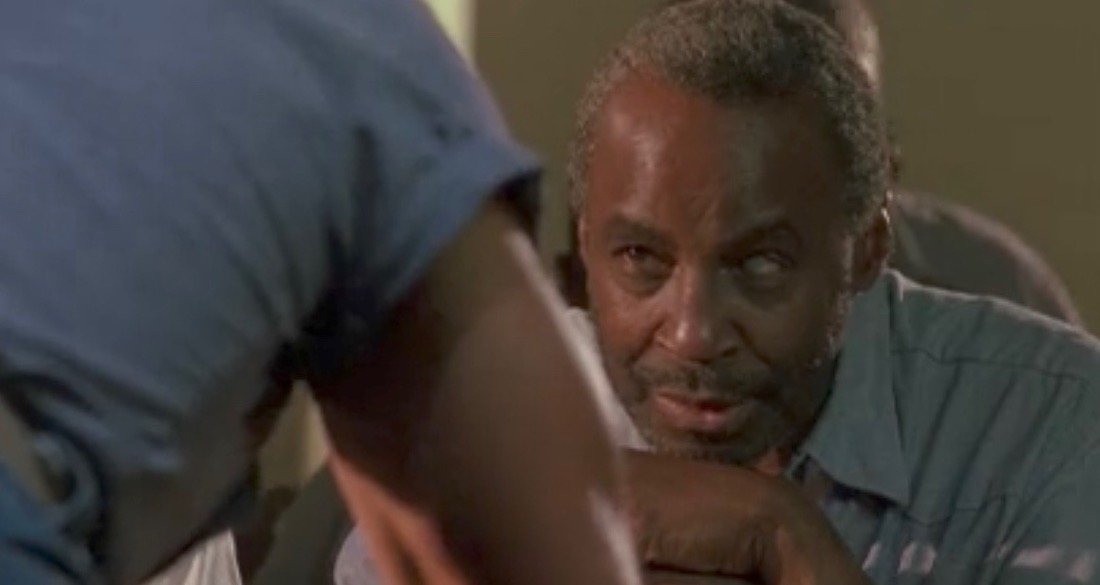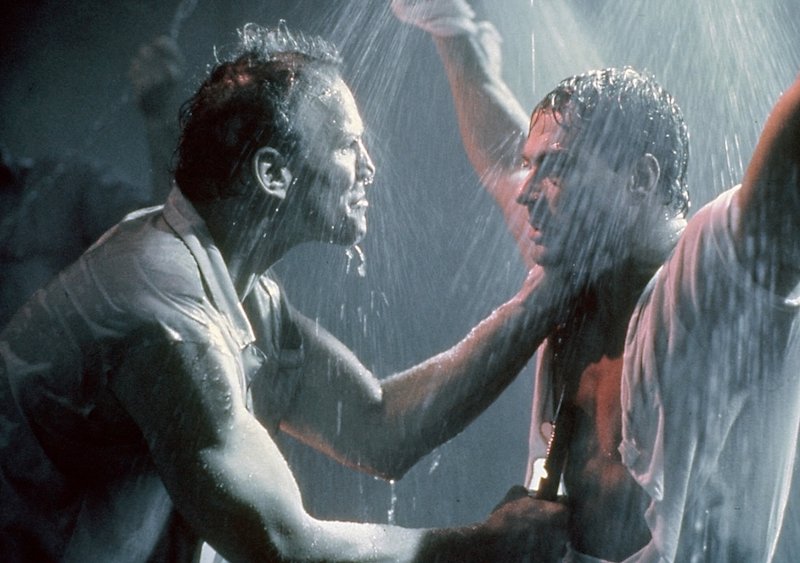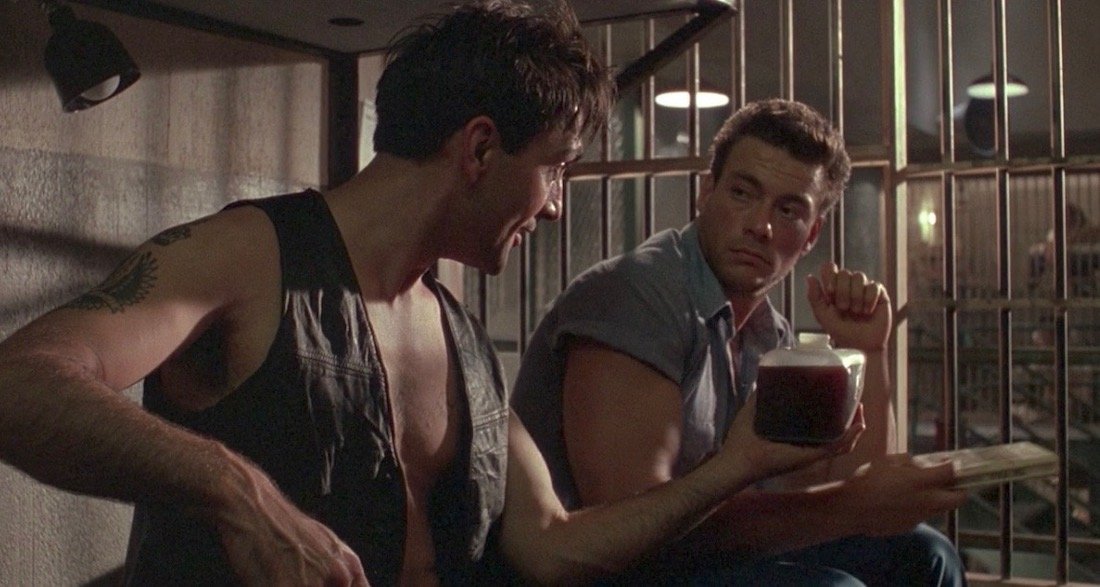DEATH WARRANT (1990)
In my ongoing quest to finish watching the ‘80s/‘90s filmographies of action stars like Jean-Claude Van Damme, some films deserve a spotlight for their quirks and historical significance. Undoubtedly, 1990’s DEATH WARRANT is such a title. DEATH WARRANT follows a Canadian cop named Louis Burke (Van Damme), who goes undercover in a Los Angeles prison to discover the truth behind a series of murders occurring within its walls. It was also one of the last releases of Cannon Films before they went defunct. Compared to watching a lot of Van Damme’s other movies, it’s surprising how much DEATH WARRANT feels more like a prison drama until the third act.
As a prison film, DEATH WARRANT is loaded with different cliches like the sympathetic prisoner friend in Hawkins (Robert Guillaume) and the corrupt Sergeant De Graff (Art LaFleur), the prison’s main authority figure. As has been noted before, Burke’s relationship with Hawkins really gives the film a “THE SHAWSHANK REDEMPTION (1994) but as an action film” vibe. (Though this film preceded SHAWSHANK REDEMPTION’s adaptation by around a few years.) De Graff is an almost textbook example of a hate sink character, solely existing to threaten every character. His beef with the cast of characters is even accentuated by the cool face-to-face shot between Burke and De Graff in one scene.
While definitely an African American figure only this period of action films could’ve produced, Priest’s (Abdul Salaam El-Razzac) ominous characterization contributed more to the prison’s tone and exploration of its power structure. Even some moments with the wider prison population are cool, such as when they corner Dr. Gottesman (Armin Shimerman) towards the end, with someone saying “You’re just in time for surgery, doc!” The only exception to the film’s average prison movie characters is Burke’s love interest, Amanda Beckett (Cynthia Gibb). She’s a fairly typical ‘80s/‘90s action movie love interest, but it’s interesting how David S. Goyer’s script sets her up as a more layered character at first. Reminds me of the similar role in Cannon’s HERO AND THE TERROR (1988) as they’re both initially strong characters but devolve into purely action movie romance cliches by the end.
There's an effectively dire atmosphere brought to the forefront in scenes where Burke converses with the prisoners to find out more information. The constant POV shots by cinematographer Russell Carpenter, showing the different cells, really convey the seedy world the prisoners live in. The props featured in the different cells added a lot of character to the different prisoners Van Damme’s Burke encounters. Even the constant blue lighting/fog combination throughout the prison sets made it feel super obvious that DEATH WARRANT is a 20th-century action film. The strong direction makes it really apparent director Deran Sarafian wanted to prove his action direction chops to a larger audience.
Jumping into the action, Van Damme uses his famous legs in creative ways, fitting in line with their use in the entirety of his films I’ve seen. Case in point, he awesomely kicks an inmate down via jump cuts in one action scene later in the film. While some moments are fun like him stuffing a goon’s head into the dryer, the standout scene is definitely the final fight. It gets real when Van Damme raises those absurdly toned arms and screams “COME ONNNNNNNNN!!!!!” The fight subverts action film tropes when Burke defeats The Sandman (Patrick Kilpatrick) and just walks away in silence, without any kind of one-liner, along with the equally silent prisoners. This moment of silence neatly wraps up the prison storyline by implying Burke inspired respect or fear in the eyes of the prisoners by defeating The Sandman.
Focusing on Van Damme, it really seems like his screams, violent responses to traumatic flashbacks, getting into his birthday suit and insane kicks are his characters’ four biggest characteristics in every film. Though, DEATH WARRANT only contains loud screaming, Van Damme nudity and cool kicks respectively. By having most of these characteristics (which he also shares with other action stars of the ‘80s and ‘90s), Van Damme’s Burke suggests Van Damme found his distinctive footing as an action star by the time DEATH WARRANT was released.
The Sandman deeply reminded me of the Night Slasher (Brian Thompson) from COBRA (1986). The Sandman and the Night Slasher from COBRA are so eerily similar, being both demented serial killers who are slasher-like and know corrupt cops. They are also both defeated in an industrial-looking environment, surrounded by fire. Both of their actors, Kilpatrick and Thompson, somewhat resemble each other, with their tall stature and sinister glares. Considering Cannon’s involvement in both films, the producers probably liked the idea of a diabolical serial killer character appearing in their action films.
Owing to its status as one of Cannon’s last films distributed by MGM, DEATH WARRANT is reminiscent of others made by the legendary B-movie studio. Though somewhat restrained in its goofiness at times, compared to Cannon’s typical film library. This restraint also reflects the dark times Cannon was facing at the turn of a new decade in the ‘90s. The rampant ‘80s charm which fueled some of their most notable films (including Van Damme’s great CYBORG (1989)) just wasn’t cutting it anymore. What compounded this was the financial situation brought on by ambitious projects like LIFEFORCE (1985). In light of Cannon’s financial troubles, the production team behind DEATH WARRANT made the best of it to deliver a decent film.
Despite DEATH WARRANT’s relative obscurity compared to Van Damme’s other films, he would go on to kick a massive hole into the A-list in the couple of years after its release. In a fitting way, DEATH WARRANT is a memorable bookend to the Cannon era of Van Damme’s career.







